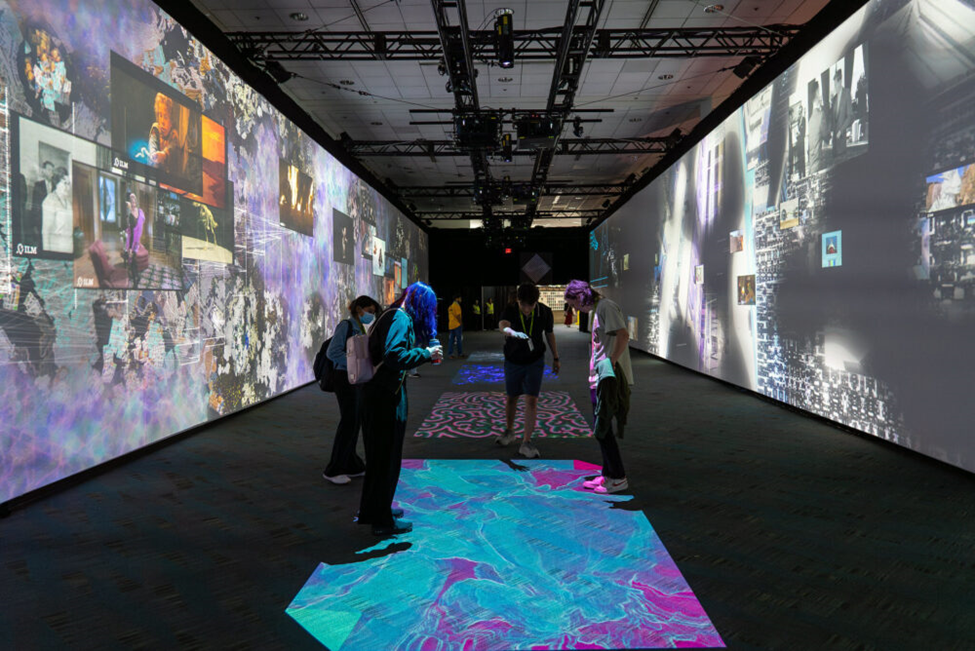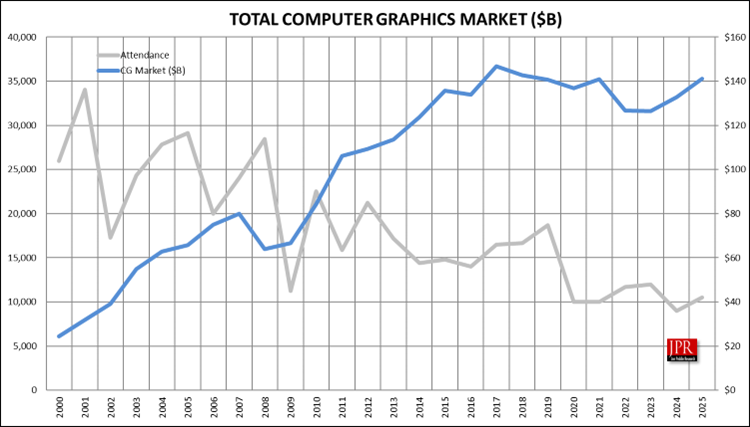After 50 years, Siggraph continues to thrive as a source of inspiration for artists, computer scientists, and innovators. Unlike other conferences that have faded away, Siggraph remains vibrant. Despite initial thoughts that computer graphics (CG) had achieved its pinnacle in the late 1990s, new challenges and breakthroughs persisted. Cube mapping, affordable GPUs, high-res monitors, real-time ray tracing, Pixar’s Universal Scene Description framework, and Khronos’ APIs united disparate technologies. Moore’s law still advances, bolstering FLOPS, transistors, bandwidth, and affordability. CG adapts to new tech, spanning industries from entertainment to aerospace. The CG market’s value surged from $20 billion in 2000 to $140 billion in 2023. Siggraph chronicles these transformative trends and offers expertise in the CG industry.

Siggraph celebrated its 50th year in existence in August 2023.
Why is that significant or important?
Do you remember any of these conferences: Comdex, Joint Computer Conference, NCGA, CeBIT, CD-ROM International Conference, WinHEC conference, World Movers VRML Developers Conference, New Animation Technology Conference, etc., etc.? All great conferences, all gone, and yet, Siggraph, after 50 years, continues to inspire and attract artists, computer scientists, experiments, and more than one genius. The format hasn’t changed much over the decades, and neither has some of the old-timers who attend. At one time, maybe in the late 1990s, someone said, “It’s done, CG has reached its goal, it’s in every computer and almost every program; it’s over.”
And then cube mapping was introduced, and consumer-priced GPUs, and high-resolution monitors that cost less than $1,000, and, and, and…. And it wasn’t over, it’ll never be over. There’s always a challenge. Nvidia introduced its real-time ray-tracing hardware in 2018, and since then, has made three improvements on it—are we there yet? Pixar opened up and gave away its Universal Scene Description (USD) framework, and in two years, alien and sometimes antagonist programs were talking to each other. Khronos opened up and advanced APIs, also bringing warring tribes together for a common good. Now are we there?
And Moore’s law keeps marching along. It’s called an old man who can’t run as fast anymore but is still running. So, every year, we get more FLOPS, transistors, bandwidth, and lower costs. Not bad, old fella.
CG empowers and embraces almost every new computer technology to show up. It consumed and drove the Internet. It ate up real-time physics and stochastic mathematics. It embraced and expanded NURBS, and it made micropixels from subpixels and hasn’t found the end yet.
Scenes have gone from a challenging VGA 100K polygons with flat shading to 4K scenes with tens of millions of polygons and global illumination. Surely, we must be there by now. No?
The market value of the CG industry, with most generous inclusion of items, has grown from $20 billion in 2000 to $140 billion in 2023.

In the late 1970s to early 1980s, the CG industry was ill-defined, had a small population of practitioners—many in academia—and was described as a technology in search of a market.
Today, the CG industry permeates every other industry, any device with a screen, and every form of entertainment, robotics, medicine, AI, geophysics, and aerospace, to mention a few. No single product is manufactured without CG—none. And CG is used to design the semiconductors and displays that use CG.
We at Jon Peddie Research have been tracking, measuring, reporting, and sometimes influencing the CG industry since Siggraph started. Over that period, we’ve seen some, predicted some, and have been surprised by some of the trends and developments—but we’ve been there for just about every one of them. Our data goes back to before the PC came on the scene. And there aren’t many leaders in the industry we don’t know. We offer reports, in-person presentations, and consulting, and we test things, too.
If you’re curious about algorithms to AI, or pixels to polygons, we can probably help. Ask us a question.